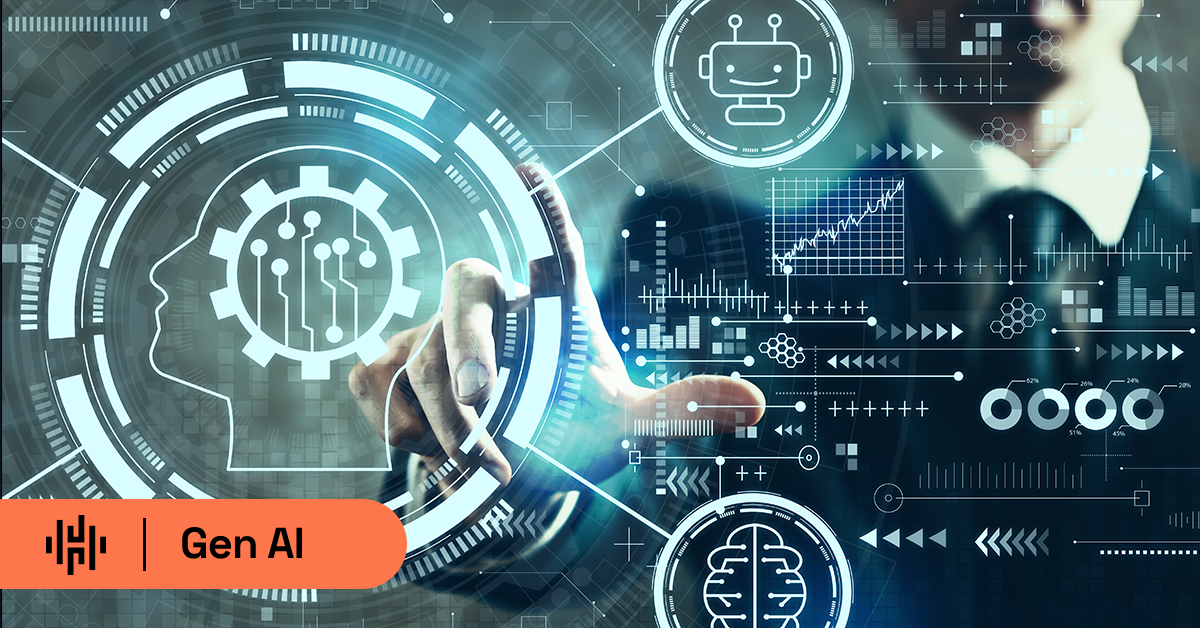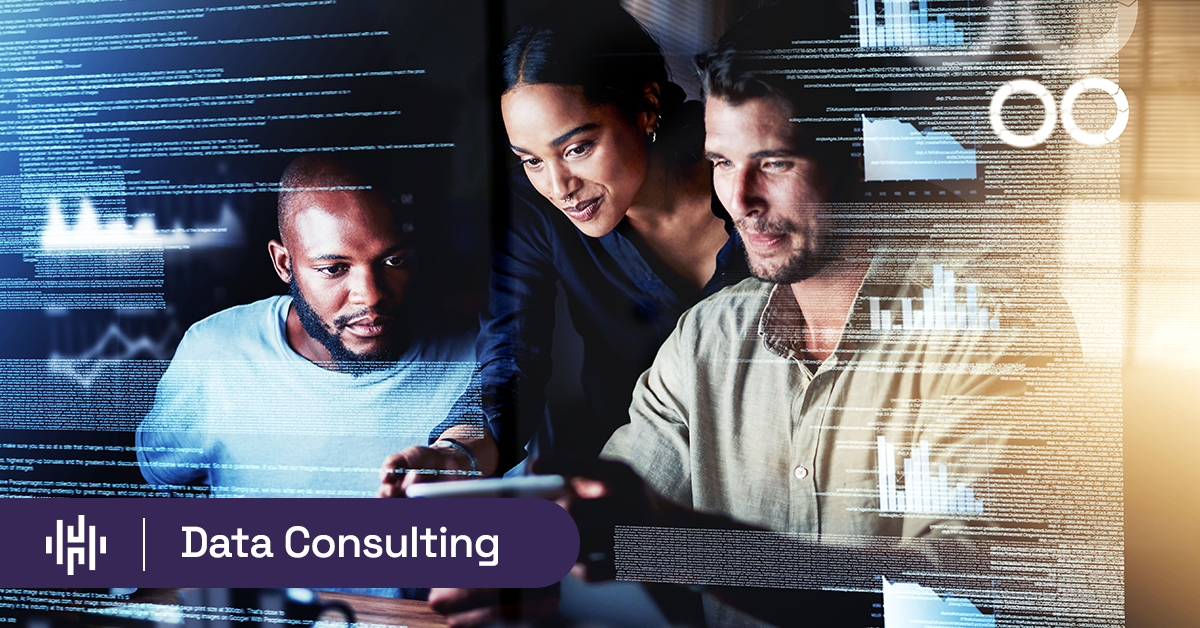The latest installment in Hakkoda’s Data & AI Leadership Summit series brought together innovators from across consumer goods, retail, and supply chain to share how they’re turning modernization and AI into real business outcomes.
Across keynotes, panels, and fireside chats, one theme was driven home with crystal clarity: that the future belongs to enterprises who combine strong data foundations with bold experimentation.
Naturally, other patterns also emerged when it came to bringing successful AI use cases to production. Here are the big six data and AI takeaways that stood out over two days of keynotes, panels, and fireside chats.
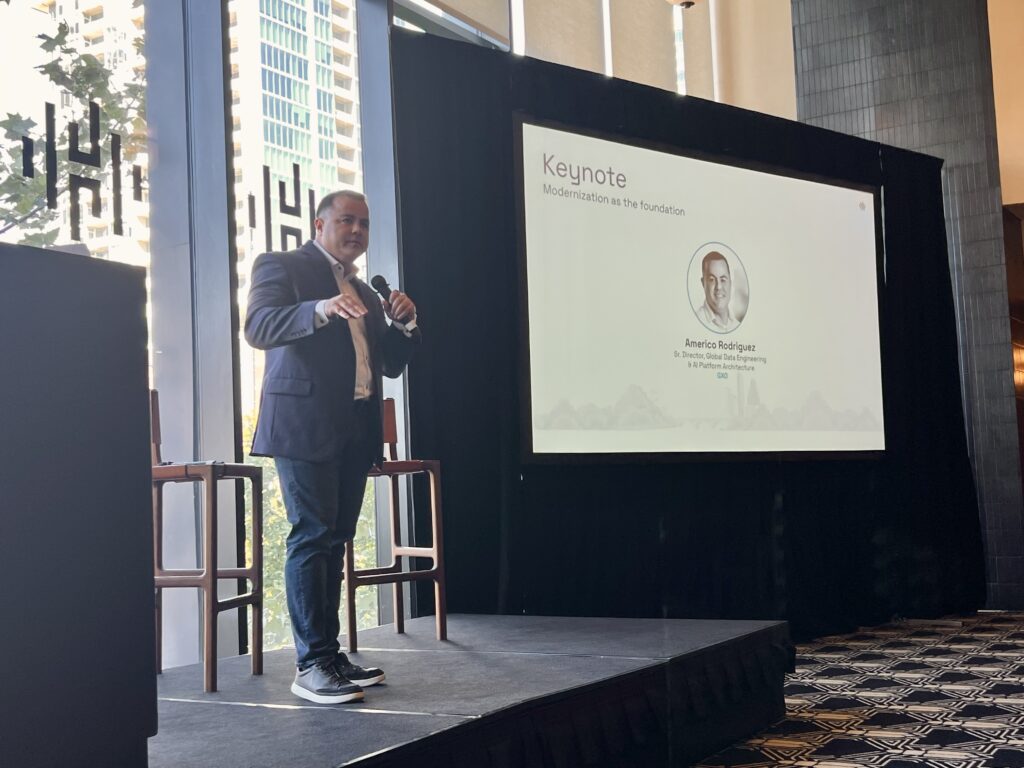
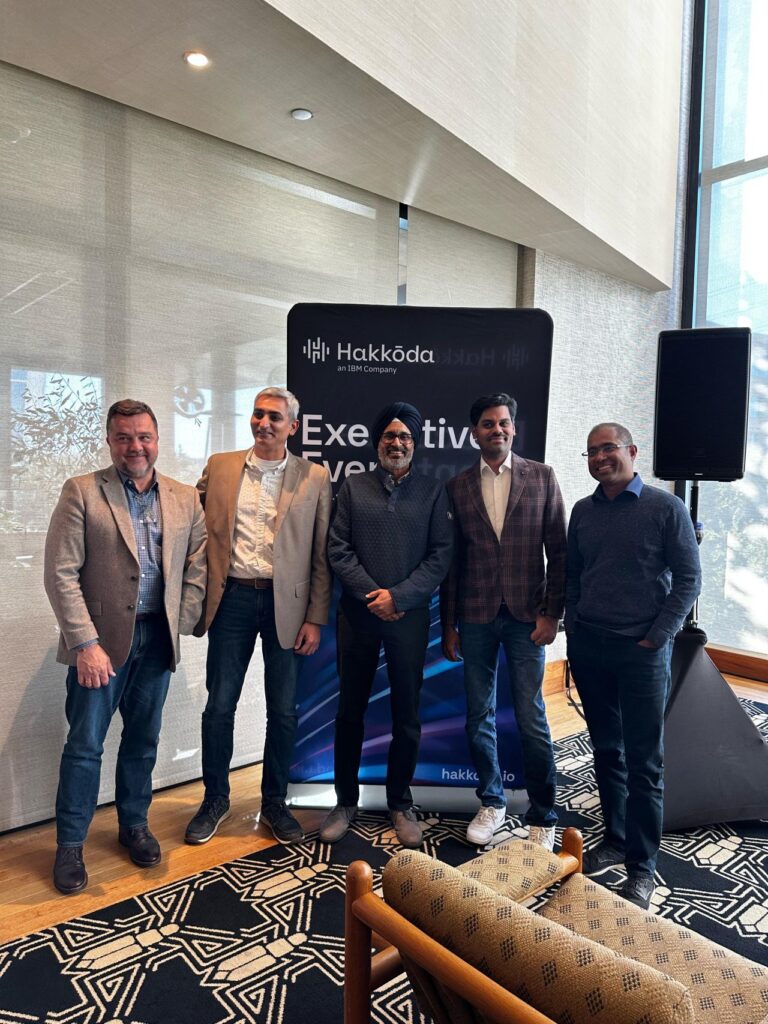
1. Modernization Is the Foundation for Every AI Win
Speaker: Americo Rodriguez, GXO
Before AI can transform your business, modernization has to transform your data. Every insight, model, and agent starts with clean, connected data and an underlying architecture built to adapt.
- Immense data volume in the supply chain creates new possibilities for optimization and forecasting.
- Success now depends on speed of decision-making, not just accuracy.
- The best partnerships are built around flexibility, including “two-way door” decisions that allow for iteration.
- Future-proofing means designing systems and teams for continuous innovation, not one-time upgrades.
Key takeaway: AI doesn’t replace modernization. It’s the reward at the end of that journey.
Food for thought: As you take AI to your organization, be thoughtful about how that AI interacts with the human workers already delivering your product. Do you want your AI to replace individuals, or do you want it to augment and increase their capacity? As data leaders, the way we frame these early AI use cases to our organization can shape the way teams are built, staffed, and supported.
2. Bridging the Gap Between AI Pilots and Production
Speakers: Chris Burchett, Blue Yonder & Subha Gopal, Hakkoda
Many organizations are stuck in the “pilot trap,” with successful proofs of concept that never scale. Bridging that gap requires both technical and cultural shifts.
- Get the fundamentals right: data quality, governance, and security.
- Factor in the “cost of inference.” Scale and performance must be planned from the start.
- Define business value first and communicate it in the language of outcomes.
- Expect the rise of explainable AI, intelligent agents, and cross-functional collaboration.
Key takeaway: The real opportunity isn’t in building more pilots. It’s in building the platforms that make scaling AI possible.
Food for thought: Many have called this “the year of agents.” It might be the year agents got started, but it’s certainly not the year AI agents arrived at their full potential. One of the biggest data and AI takeaways to come out of this session was the fact that data leaders in the room forecasted it’s likely to be 2027 or later before AI agents are delivering everything we anticipate today.
3. Modernization Is a Journey, Not a Destination
Panel: Moderated by Romit Bhatia, IBM, with participants from PepsiCo, Ross Stores, Nestlé, and US Foods
Modernization isn’t a switch you flip. It’s a journey of continuous improvement and change management.
- “It’s not buying a new house. It’s buying a fixer-upper.”
- Start from your foundations: data visibility, operational insight, and customer experience.
- Connect modernization directly to your organization’s pain points and people.
- The hardest parts are often cultural: communicating value, raising data literacy, and knowing when to pivot.
Key takeaway: The story of modernization is best told through the lens of your people, not your platforms.
Food for thought: What’s the right pace for modernization? Some data leaders prefer to lead the pack; others think there’s wisdom in letting competitors tread a few paths and reveal the value…or lack thereof. Especially in the age of AI, how do you modernize at pace without falling into the trap of immature technology, and more importantly what does it take to lead your organization toward balance?
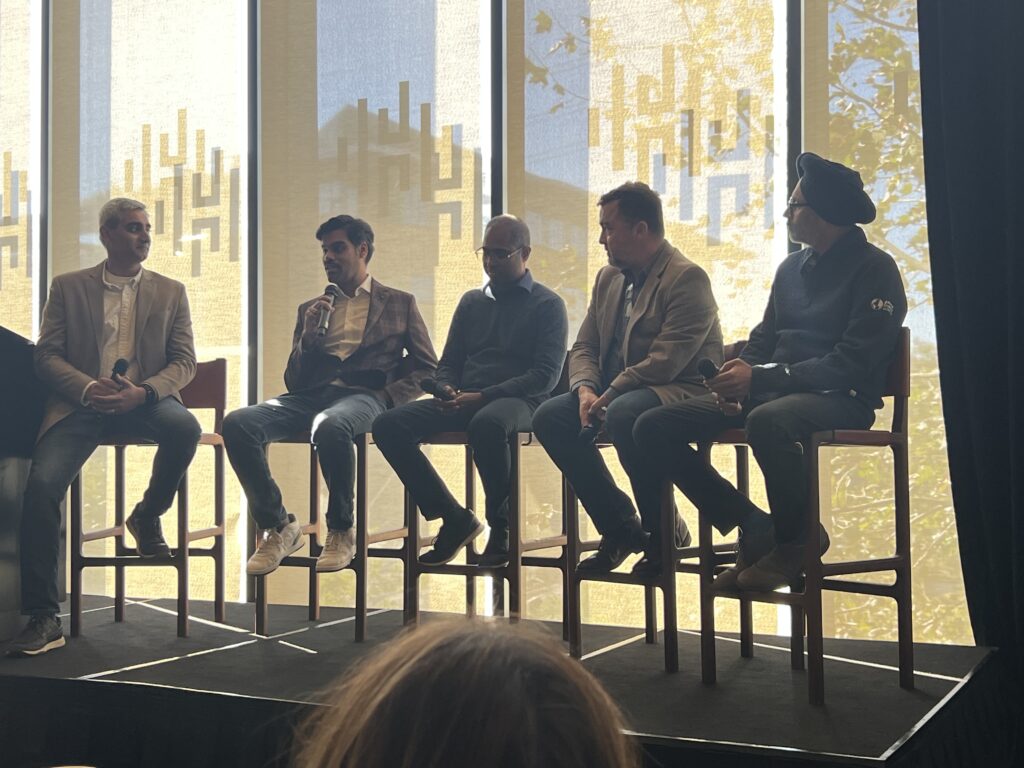
4. Define and Lean Into Your Superpower
Speaker: Leslie Lorenz, Snowflake
Innovation starts with knowing your “superpower”—the intersection of talent, passion, and purpose.
- Superpowers are forged under pressure; they reveal what you bring to change.
- Aligning personal and organizational superpowers creates acceleration and clarity.
- The ability to adapt and thrive through disruption is the multiplier.
Key takeaway: In times of transformation, resilience and self-awareness are strategic assets.
Food for thought: What’s your organization’s superpower? Muse on that and find an answer that can’t be claimed by all of your competitors. Be honest, and when you have an answer, jot it down. Now start to think about your organization’s superpower in alignment with your own. How do those two superpowers work together or complement one another? Finding the rooms where those two superpowers can work together might lead you to your biggest professional success yet.
5. Scaling from Proof of Concept to Production
Panel: Moderated by Bob Hardin, Hakkoda, with participants from Hakkoda, Ross Stores, and GXO
Moving from POC to production is less about technology and more about designing for scale.
- Plan for scalability from day one, but keep experimentation alive.
- Learn from failures and codify those lessons.
- Involve a wide range of stakeholders early to validate value and feasibility.
- Build a culture where innovation is everyone’s job, not just IT’s.
Key takeaway: Treat every POC as an investment in your innovation muscle — not just a test case.
Food for thought: We’ve all heard alarming statistics about the number of AI POCs that fail in the marketplace. In a roomful of leaders who’d executed successful AI POCs and expanded them into broader organizational initiatives, most listed listening and learning from their team as a critical step in the project. In other words: They didn’t build AI for the problem they wanted to solve. They built AI for the problem their warehouse team wanted solved.
6. The New Playbook: People, Process, and Purpose
Across sessions, one truth stood out: modernization, AI, and innovation succeed when they’re grounded in purpose and collaboration.
- Modernization builds the platform.
- AI expands the possibilities.
- People drive the progress.
Key takeaway: Data and AI are no longer back-office functions. They’re the new language of strategy.

How Hakkōda, an IBM Company, Can Help You Lead the Next Wave of AI Use Cases
As two days of conversation and the data and AI takeaways we’ve come away with make abundantly clear, innovation isn’t about pushing isolated pilots to production. It’s about building whole ecosystems grounded in trust, scale, and shared purpose.
Events like the Data and AI Summit were designed to help foster exactly that, and Hakkoda is proud of the role we’ve played in bringing partners and clients together to drive real outcomes for complex businesses.
Ready to take your place at the front of the pack with your own data and AI journey? Let’s talk today.

